
views
Preparing to Request the Order

Learn about restraining orders. When a court issues a restraining order, it commands the person restrained to stop doing things. If the person continues to do them, then he or she can be held in contempt of court, which carries fines or even jail time. Generally, restraining orders can prohibit people from doing the following: contacting your or attempting to contact you trying to place you under surveillance coming within a certain distance of you possessing a firearm staying in the home or entering the residence

Decide which order you need. The two most common types of restraining orders are domestic violence protection orders and civil antiharassment protection orders. You should decide which one you need before filling out the necessary paperwork. Different protective orders apply depending on your relationship to the abuser. Domestic violence protection orders. Generally, these protection orders are available when you are being abused by someone within your home or by someone with whom you have had an intimate relationship in the past or present. Civil antiharassment protection orders. You do not need to have any particular relationship with the harasser to seek this protection order. For example, you could be harassed by a complete stranger. These orders are also available if the harassment you face by a domestic partner does not rise to the level of harassment necessary to get a domestic violence protection order.

Understand temporary orders. When you file for your restraining order, the judge will likely grant a temporary order without a hearing (“ex parte”). Temporary orders cannot become final orders until the judge gives the alleged abuser an opportunity to respond. Temporary orders can be granted on the same day that you apply for them and take effect immediately. The court will schedule a hearing for a couple weeks later. At this point, you will have to attend a hearing and argue why the temporary order should be replaced by a final order.
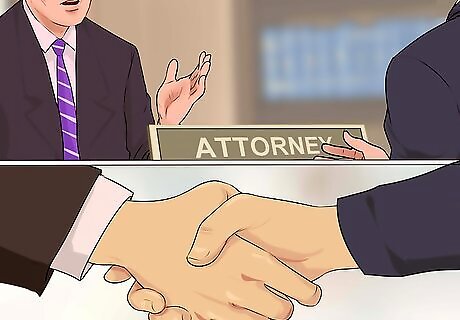
Get legal assistance. You might want to meet with a lawyer depending on your circumstances. For example, if you are seeking a protection order as part of a divorce or separation, then you should certainly get a lawyer. Restraining orders can be much broader when granted during a divorce. For example, the person restrained can be prevented from disposing of assets. You can also be granted temporary custody of your children. You can find a qualified attorney by contacting your county’s bar association, which should run a referral program. If you are low-income, then you should contact CLEAR, which is the central organization that handles intake for legal aid organizations in the state. You can contact them at 1-888-201-1014. Someone should be available from 9:15 am to 12:15 pm to answer your call.

Find the correct court. You can get a protection order by filing forms in the county where you live or where you used to live. If you have moved to avoid detection by the abuser, then you might want to file in the county where you used to live. If you want to keep your address confidential, then ask the court how you can do that.
Getting a Domestic Violence Protection Order

Identify your abuser. You can seek a domestic violence protection order only against certain people, depending on your relationship together: a spouse or former spouse a domestic partner or former domestic partner (includes same-sex couples) a person you have had a child with any adult related by blood or marriage any adult who has resided with you, now or in the past a person you are dating or have dated, regardless of whether you have lived together step-parents and grandparents step-children and grandchildren

Check if the abuse qualifies as “domestic violence.” You can get a domestic violence restraining order when the abuser’s behavior meets the state’s definition of “domestic violence.” The following behaviors qualify: physical harm assault, including sexual assault bodily injury stalking any behavior that puts you in fear of immediate physical harm, assault, or bodily injury (including biting, hitting, pushing, slapping, or choking)

Get the forms. You will need to fill out forms to request a restraining order. You can get the forms from the court clerk. Go to the clerk and tell him or her that you need a restraining order. Explain who is harassing and abusing you. Type the information into the forms or print legibly using black ink. Make sure you fill out the forms completely. If you need additional space, then attach a piece of paper. Sign and date the attached papers.

File the forms. Take the forms to the court clerk and ask to file. You do not have to pay a filing fee. You will have to verify the information in the petition by swearing an oath. You will probably have to sign in front of a notary public. Be sure to bring sufficient personal identification, such as a valid driver’s license or passport.

Meet with the judge. After filing, you will need to meet briefly with the judge to talk about your case. A temporary restraining order can be issued, which will be valid for 14 days. If the judge grants you a temporary protection order, take the order (signed by the judge) and give it to the court clerk to file. Make sure to get several copies. You will need one for yourself and possibly one for your children’s school.

Serve notice on the abuser. Whether the judge grants a temporary protection order or not, you will very likely receive a date for a full hearing. At this hearing, the defendant will be able to represent him or herself. You need to serve notice on the defendant at least five business days before the hearing. You will need to send a copy of your petition as well as a copy of any temporary restraining order granted. You can have the sheriff serve notice on the abuser. You should not try to serve notice yourself.

Attend your hearing. Before your temporary restraining order expires, you will need to attend a hearing. The defendant will be given notice of the hearing and can choose to attend to defend against the restraining order. If you prevail, then the restraining order can be extended for one year or longer. To prepare for the hearing, you should bring evidence of any abuse you have suffered. Bring abusive communications, such as emails, letters, notes, or voice mail messages. If you were beaten or struck with an object, then bring photographs of your injuries. Also bring copies of medical and police reports that relate to any abuse. The judge will want to see them. When it is your turn to speak at the hearing, tell the judge why you need the protection order and offer to show your supporting documentation.

Get your final restraining order. If the judge decides to make the restraining order permanent, then be sure to get several copies. You will want one to store at home and one to keep on you at all times. You might need additional copies for your child’s school or daycare.
Getting a Civil Antiharassment Order

Identify the harassment. Under Washington law, “harassment” is defined as a series of acts over a period of time, which seriously alarm, annoy, or harass you. The acts cannot serve a “legitimate purpose” (such as political protest). Furthermore, the harm must reasonably cause you emotional distress or cause you to reasonably fear for the well-being of your child.

Determine if you need a domestic violence restraining order instead. You can get a civil antiharassment restraining order if you do not qualify for a domestic violence restraining order but are nevertheless the victim of violence or potential violence. For example, you can get the civil antiharassment order if you are being abused by someone who you do not live with and have never had an intimate relationship with (such as a neighbor or stranger). You can also get a civil antiharassment order if the harassment you suffer doesn’t rise to the level of “domestic violence” as described by the state statute.
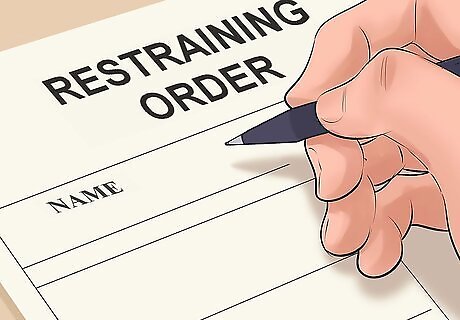
Get the forms. You can get the forms from the court clerk. Tell the clerk that you want a civil antiharassment restraining order. Although the clerk cannot provide legal advice, he or she can give you the correct forms. Fill out the forms in black ink, writing legibly. You may be able to fill out the forms on a computer at the clerk’s office.

File the forms. Take all completed forms to the court clerk and ask to file. You will probably not have to pay a filing fee if you are the victim of stalking, sexual assault, or domestic violence. Ask the court clerk when you should pick up your temporary protection order. Civil antiharassment protection orders can be granted “ex parte,” which means the accused will not have a chance to speak at the hearing.

Serve notice of the hearing. You will need to give the harasser notice of the full hearing. At the hearing, the defendant can argue that you should not get a final protection order. Ask the court clerk for what methods of service are acceptable. You must make service at least five days before the hearing date.

Attend a full hearing. If you are granted a temporary restraining order, it is good for 14 or 24 days (the judge will tell you which). Before the expiration, the judge will schedule a full hearing to determine whether the protection order should be extended. Civil antiharassment protection orders can be extended to one year or extended permanently. Be sure to bring evidence of the harassment. For example, you might have taken pictures of slurs written by a neighbor on your property. Also, witnesses might have observed the person harassing you. Ask these people to attend the hearing where they can testify on your behalf.
Enforcing the Restraining Order
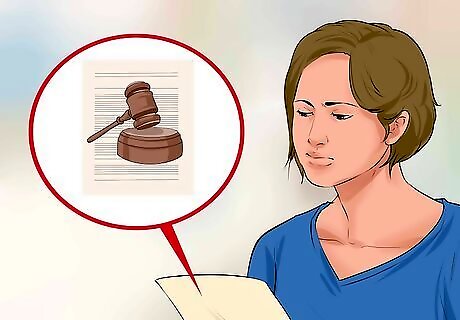
Read the order. Once you get a copy of your temporary or final protection order, be sure to read it. The order defines what the defendant cannot do. You should understand the limitations being put on his or her conduct so that you can know when to report violations. If you lost your copy of the restraining order, then contact the court clerk and ask for a copy. Keep a copy on you at all times. You should always have your copy of the restraining order in case you need to show it to the police. Also keep another copy in a safe place at your home.
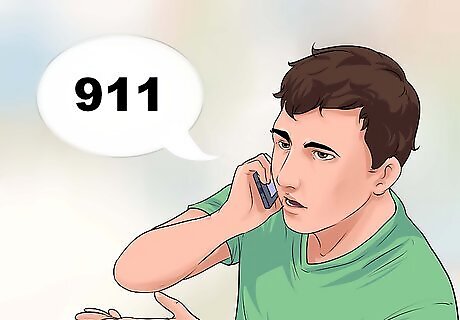
Call the police if the abuser violates the order. If the abuser shows up at your house or place of work in violation of the order, then call the police. They will arrest the abuser and possibly hold him or her in jail. Arrest is mandatory for violations of domestic violence protection orders. The abuser can then be charged with contempt or a criminal violation. Violation of a civil antiharassment protection order is a gross misdemeanor. The harasser could face criminal charges or contempt.
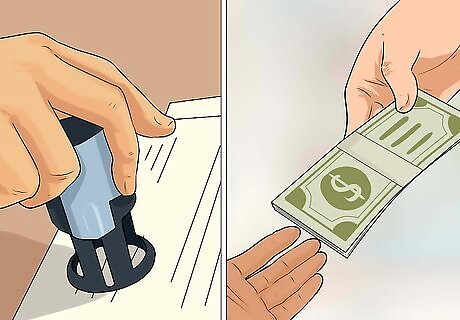
Renew the protection order. You can renew both a domestic violence protection order and a civil antiharassment protection order. At any point in the three months before the expiration of the order, you can file a petition with the court for renewal. Ask the court clerk for a form petition that you can fill out. You will have to serve notice on the person restrained and attend another hearing.
















Comments
0 comment